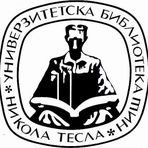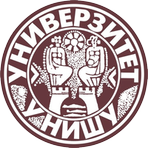Title
Fenomen zavisnosti od društvenih mreža kao javnozdravstveni problem i povezanost sa simptomima mentalnih poremećaja kod studenata
Creator
Jovanović, Tamara, 1984-
CONOR:
32728167
Copyright date
2023
Object Links
Select license
Autorstvo-Nekomercijalno-Bez prerade 3.0 Srbija (CC BY-NC-ND 3.0)
License description
Dozvoljavate samo preuzimanje i distribuciju dela, ako/dok se pravilno naznačava ime autora, bez ikakvih promena dela i bez prava komercijalnog korišćenja dela. Ova licenca je najstroža CC licenca. Osnovni opis Licence: http://creativecommons.org/licenses/by-nc-nd/3.0/rs/deed.sr_LATN. Sadržaj ugovora u celini: http://creativecommons.org/licenses/by-nc-nd/3.0/rs/legalcode.sr-Latn
Language
Serbian
Cobiss-ID
Theses Type
Doktorska disertacija
description
Datum odbrane: 27.10.2023.
Other responsibilities
Academic Expertise
Medicinske nauke
University
Univerzitet u Nišu
Faculty
Medicinski fakultet
Group
Katedra za socijalnu medicinu i higijenu sa medicinskom ekologijom
Alternative title
The phenomenon of social networks addiction as a public health problem and its connection with symptoms of mental disorders in students
Publisher
[T. M. Jovanović]
Format
123 lista
description
Biografija autora: list [124].
Bibliografija: list. 107-117
description
Social medicine
Abstract ()
The study included 1,400 randomly selected students. Symptoms of
depression, anxiety and stress were assessed using the DASS 42 scale.
Symptoms of excessive use of social networks were measured with
the Bergen Social Media Addiction Scale - BSMAS. Also, the
socioeconomic characteristics of the examined students are shown; as
well as different habits in terms of using the social networks
themselves and those of different lifestyles. The study was conducted
through a google forms electronic questionnaire. Statistical data
analysis included the application of descriptive tests, multiple linear
regression analysis, correlation tests and analytical parametric tests, as
well as binary logistic regression tests. Extremely high levels of
depressive symptoms were reported by 232 students (16.6%). Severe
and extremely severe anxiety symptoms were reported by 480
students (34.3%), while 420 (30.0%) students were exposed to
moderate, severe or extremely severe stress. It was found that the
symptoms of depression are more pronounced in students who
consumed alcoholic beverages and psychoactive substances more
often during the pandemic. Anxiety symptoms were slightly more
pronounced in students who slept longer at night, consumed more
alcoholic beverages, especially during the pandemic, as well as in
students for whom social networks represented an adequate substitute
for the content that was denied during the pandemic. More frequent
consumption of alcoholic beverages during the pandemic, as well as
general consumption of psychoactive substances, proved to be a
significant predictor in all three models: for symptoms of depression,
for anxiety and increased stress, consequently. Of the six components
of addiction, the greatest predictor of whether the respondent has a
high level of depressive symptoms was the state of conflict, where the
odds ratio was OR=10.28. This shows that respondents with a higher
conflict component score have depressive symptoms 10.28 times
more often, all factors in the model being equal. It was observed that
symptoms of depression are also more common in patients with
severe withdrawal symptoms (OR=4.27), followed by mood
modification (OR=1.82) and with relapse (OR=1.49). Symptoms of
anxiety were, similarly to symptoms of depression, most present in
subjects with a conflicted state (OR=10.31), in those with withdrawal
symptoms (OR=6.83), and then in students with pronounced mood
changes (OR= 2.55). In creating adequate interventions aimed at
solving this problem, it should be borne in mind that the goal cannot
be complete weaning, but controlled and meaningful use of social
networks through the development of adequate skills and raising
awareness of possible risks to health and general well-being due to
excessive use. Bearing in mind the exceptional sensitivity of young
people during their studies, as well as the indicators that speak of the
growing trends of mental health disorders in this period, early
detection and timely treatment are of priority importance.
Authors Key words
sajtovi društvenih mreža; zavisnost; mentalno zdravlje; studenti
Authors Key words
social networking sites; addiction; mental health; students
Classification
613.86-057.875+316.774:004.738.5(043.3)
Subject
B680
Subject
S290
Type
Tekst
Abstract ()
The study included 1,400 randomly selected students. Symptoms of
depression, anxiety and stress were assessed using the DASS 42 scale.
Symptoms of excessive use of social networks were measured with
the Bergen Social Media Addiction Scale - BSMAS. Also, the
socioeconomic characteristics of the examined students are shown; as
well as different habits in terms of using the social networks
themselves and those of different lifestyles. The study was conducted
through a google forms electronic questionnaire. Statistical data
analysis included the application of descriptive tests, multiple linear
regression analysis, correlation tests and analytical parametric tests, as
well as binary logistic regression tests. Extremely high levels of
depressive symptoms were reported by 232 students (16.6%). Severe
and extremely severe anxiety symptoms were reported by 480
students (34.3%), while 420 (30.0%) students were exposed to
moderate, severe or extremely severe stress. It was found that the
symptoms of depression are more pronounced in students who
consumed alcoholic beverages and psychoactive substances more
often during the pandemic. Anxiety symptoms were slightly more
pronounced in students who slept longer at night, consumed more
alcoholic beverages, especially during the pandemic, as well as in
students for whom social networks represented an adequate substitute
for the content that was denied during the pandemic. More frequent
consumption of alcoholic beverages during the pandemic, as well as
general consumption of psychoactive substances, proved to be a
significant predictor in all three models: for symptoms of depression,
for anxiety and increased stress, consequently. Of the six components
of addiction, the greatest predictor of whether the respondent has a
high level of depressive symptoms was the state of conflict, where the
odds ratio was OR=10.28. This shows that respondents with a higher
conflict component score have depressive symptoms 10.28 times
more often, all factors in the model being equal. It was observed that
symptoms of depression are also more common in patients with
severe withdrawal symptoms (OR=4.27), followed by mood
modification (OR=1.82) and with relapse (OR=1.49). Symptoms of
anxiety were, similarly to symptoms of depression, most present in
subjects with a conflicted state (OR=10.31), in those with withdrawal
symptoms (OR=6.83), and then in students with pronounced mood
changes (OR= 2.55). In creating adequate interventions aimed at
solving this problem, it should be borne in mind that the goal cannot
be complete weaning, but controlled and meaningful use of social
networks through the development of adequate skills and raising
awareness of possible risks to health and general well-being due to
excessive use. Bearing in mind the exceptional sensitivity of young
people during their studies, as well as the indicators that speak of the
growing trends of mental health disorders in this period, early
detection and timely treatment are of priority importance.
“Data exchange” service offers individual users metadata transfer in several different formats. Citation formats are offered for transfers in texts as for the transfer into internet pages. Citation formats include permanent links that guarantee access to cited sources. For use are commonly structured metadata schemes : Dublin Core xml and ETUB-MS xml, local adaptation of international ETD-MS scheme intended for use in academic documents.


